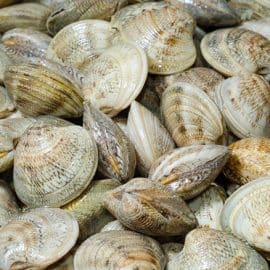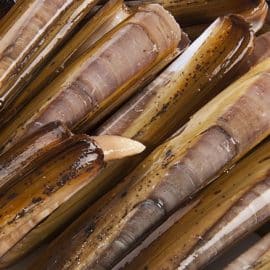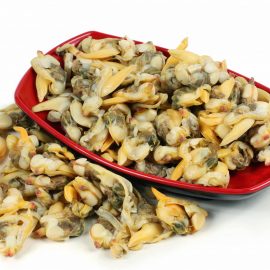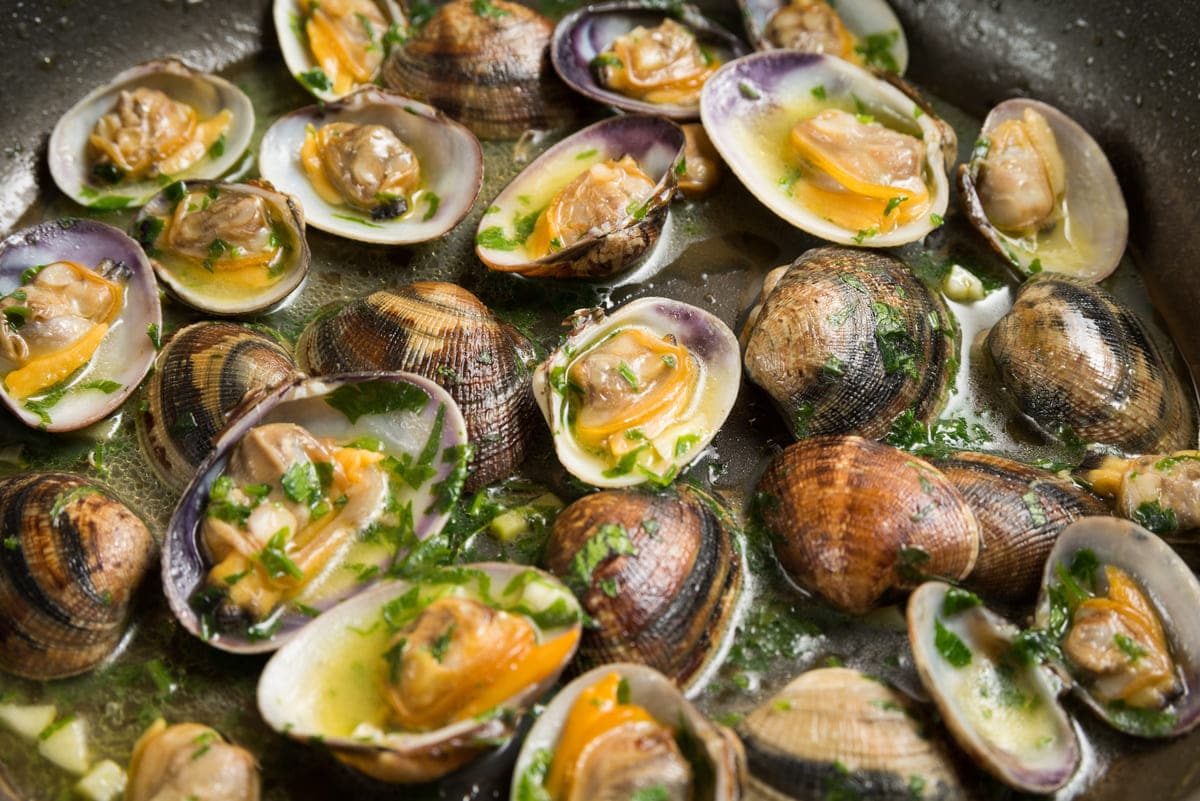
Introduction
Clams are marine invertebrates belonging to the class Bivalvia, which includes a variety of close relatives such as mussels, oysters, and scallops. Clams are typically found in varying shapes and sizes, ranging from small, dime-sized clams to large, fist-sized clams. They have a soft and fleshy mantle that covers their mouth, gills, and other organs, giving them an overall round shape.
Clams stand out as an exciting seafood option, providing an exceptional and delicious experience compared to other seafood, such as oysters, scallops, and mussels. Whether steamed, fried, or boiled, clams make a compelling addition to any meal. They are also used in some traditional Chinese medicinal practices.
Description
Clams are a common name for various species of bivalve molluscs found in fresh and saltwater environments. They are some of the most abundant and popular animals in aquatic habitats and come in multiple sizes, shapes, and colours.
There are over 3,000 species, including the Giant Clam, Pacific Razor Clam, Northern Quahog Clam, Manila Clam, and Soft-shell Clam. Most clams are filter feeders that take food by straining plankton and detritus from the water. Clams are a pivotal part of aquatic ecosystems, as they aid in cycling nutrients and provide food and shelter for other organisms.
Common clams include venus Clams, ark Clams, razor Clams, softshell Clams, and sea clams. Clams can be classified according to various criteria, including the number of residual slits in the shell, the number of lateral teeth, the number of cardinal teeth, the size of muscular impressions, and the environment they inhabit.
Notable clams include softshell clams, hardshell clams, razor clams, surf clams, Pacific littleneck clams, ocean quahog, and geoduck.
Physical Characteristics
Clams are notable for their two-hinged shells, closed by two adductor muscles on opposite sides of the shell, often covered in hairs for protection or burrowing. Their shells are also covered in a thin, protective layer called the periostracum. Depending on the species, the colour of this periostracum varies but is typically dark brown or greenish.
Clam shells come in a variety of shapes, including oval, elongated, circular and fan-shaped, with the length of clams ranging from one to twelve inches and with the larger species weighing up to three pounds or more.
Habitat
Clams are bivalve molluscs found in several aquatic habitats, including saltwater, fresh water, brackish, and estuarine. Adaptable and tolerant, clams can thrive in a wide range of temperatures (10-30C) and salinities, living in both shallow and deep water.
Most species tend to inhabit sandy or muds of tidal flats, finding refuge in these more productive habitats, with some, like the surf clams, living on beaches.
Distribution of Stocks
Clams are widely distributed globally, with some species living in tropical regions, on the east coast and west coast of Europe and some being highly migratory.
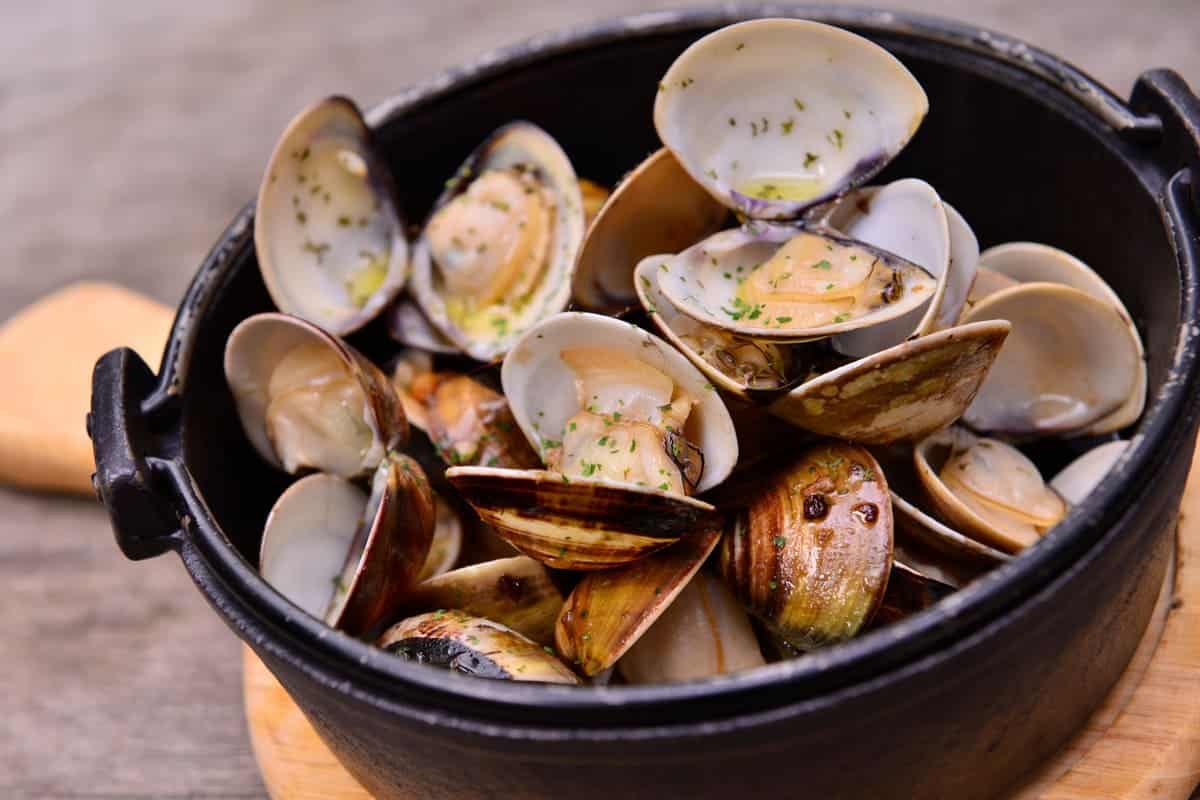
Fisheries
Fisheries are an essential source of protein and economic driver all over the world, as various species of clams, including Hard Clams (Mercenaria mercenaria), soft shell clams (Mya Arenaria), and Asian Clams (Corbicula fluminea), are harvested for food, bait and the purpose of supporting other aquaculture.
Fisheries Management
Fisheries management is essential in safeguarding clam populations from overfishing or depletion. Various measures have been implemented to ensure sustainable harvesting, such as closed areas, gear restrictions, size and bag limits, season and location closures, trap limits, and habitat protection.
Governments and organisations have thus established sustainable fisheries programs and policies to reduce fishing impacts and promote clam populations’ longevity.
Sustainable Fishing
Aquaculture is an effective way to replenish clam populations in areas that are depleted. It is beneficial to have support from governments, organisations, and participating individuals to promote eco-friendly harvesting practices, increase education and awareness, and enhance conservation structures. This way, the habitats of these critical resources can be protected while still providing an economic benefit.
Impact of Conservation Efforts
Implementing closures, catch limits, size limits, and minimum catch size regulations has successfully provided more sustainable fisheries and prevented the depletion of wild populations. This has increased the stocks of other commercially important fish, such as lobsters, crabs, and oysters.
Sustainable aquaculture methods, such as mariculture, provide a viable option for acquiring clams. At the same time, marine protected areas protect sensitive habitats from over-harvesting, and marine grass beds provide a habitat for young clams to grow and thrive. Restocking with hatchery-reared and wild-caught clams is also viable for restoring local populations.
Clam Life Cycle
The life cycle of clams starts with the shedding of eggs from a female clam. These eggs develop into free-swimming larvae known as veligers or veliger larvae. The larvae will then drift in the water column for several months, either as part of the plankton or as part of the benthic community, before settling on the seafloor.
Once the larvae are settled, they will continue to develop into immature clams and, eventually, mature. The time necessary for a clam to reach maturity and gain its adult form can vary from one to three years, depending on the species.
Clam’s Dietary Preferences
Different clams have different dietary preferences, ranging from filter-feeding species, which consume a variety of organic particles, to omnivorous species, which supplement their filter-feeding diet with small invertebrates.
Clams are adaptable to various environments and can adjust their filter rates to suit the available food in the water; and can also retract their siphons which allows them to detect food within their environment.
Significance
Clams are an essential part of marine ecosystems, present in several habitats worldwide. They have intrigued scientists with their various biological traits and behaviours, as well as their importance in the food industry and as a keystone species.
Culinary Uses
Clams can be enjoyed in a variety of ways. They are commonly eaten raw, boiled, steamed, or grilled and are commonly used in various dishes, including chowder, linguine, paella and cioppino. Clams are also widely used as a garnish or ingredient in seafood sauces, soups, and stocks.
Cultural and Symbolic Uses
Clams have been featured in many cultures throughout history and have been used for many symbolic and cultural reasons. For example, clam meat is believed to bring luck and longevity in Japan and China. Native American cultures have been traditionally harvested for centuries, providing a source of food and trade.
Nutritional Values and Benefits
Clams are loaded with essential vitamins, minerals and fatty acids. They contain high amounts of B vitamins, especially Vitamin B12, riboflavin, and minerals such as iron, selenium, and zinc.
Clams are also a great source of omega-3 fatty acids, which may reduce the risk of developing chronic diseases. They provide low calories and fat and contain dietary fibre and essential minerals, such as iron and zinc, that support the body’s metabolic processes.
The nutritional content of clams can also depend on species, region, and size, with more enormous clams usually having a higher amount of nutrients than small ones.

Taste and Texture
Clams have a distinct flavour from fish due to their lack of bones, rich, oily consistency, and salty taste. This makes them a desirable seafood source for many food dishes, such as clam chowder, steamer clams, and shellfish broth.
Cams are also easier to digest than fish and contain more protein per 100g than the average fish.
Harvesting and Storage
Clams should be harvested by hand or with a rake, disturbing the environment as little as possible. Only adult clams should be picked, as young “pea clams” should be left to grow. As well they should be harvested from clean, non-polluted sources. Clams should be stored in a cool, damp environment and kept in the refrigerator for up to 1-2 days before cooking.
Cooking Clams
Clams can be cooked using many methods, such as steaming, boiling, baking, broiling, grilling, or frying. When simmering or boiling, let the clams cook until the shells open and the clams are cooked through for optimal flavour. Discard any that do not open, as these are likely bad.
For baking, broiling and sauteing, clams should be added to the dish at the last minute and cooked until they are done. If frying, be sure not to overcook as the meat may become tough.
Clams are versatile and can be used in various dishes, such as chowders and sauces, and can even be added to pasta dishes.
Serving Suggestions
Clams are most commonly served over grilled bread, mashed potatoes, or linguine. They can also be served with a simple side of vegetables for a light and fresh meal. Regardless of the preferred preparation method, clams are a popular seafood dish that is easy to prepare and enjoy.
Sides
Sides dishes provide an opportunity for the subtle sweetness of clams to be further enhanced. Lemony fennel salad, garlicky spinach or Brussels sprouts, simple pesto or caper sauce, mashed potatoes, roasted potatoes, coleslaw, and roasted corn all work well.
Appetizers
To properly enjoy a clam meal, deliciously crunchy and light appetisers are ideally suited. Start the meal with crostini, flatbread, cucumber and pickles, spinach artichoke dip, or beer-battered onion rings for a memorable meal.
Sauces
A well-chosen sauce can bring out the delicate flavours of clam while adding a pleasing texture. Hearty and flavorful sauces like garlic and butter, tomato and bacon, white wine, shallot, and mushroom are all great accompaniments to clams.
Wines
Choosing wines specifically for their acidity can add another layer of flavour to the meal, showcasing the clams’ saltiness.
Other Sides
Other sides that pair well can include potatoes, pasta, bread, salads, and various vegetable dishes, depending on the clam species. Popular side dishes for clams include fried rice, cornbread, grain salads, steamed vegetables, and crusty bread that can be used as a vessel to scoop up the clam broth.
Complimentary Flavors
Herbs such as parsley, garlic, chives, celery, citrus flavours such as lemon and lime, and spices such as paprika, chile pepper, and crushed red pepper are all complimentary flavours to serve with clams. Additional popular flavours to serve with clams include butter, white wine, and tomatoes.
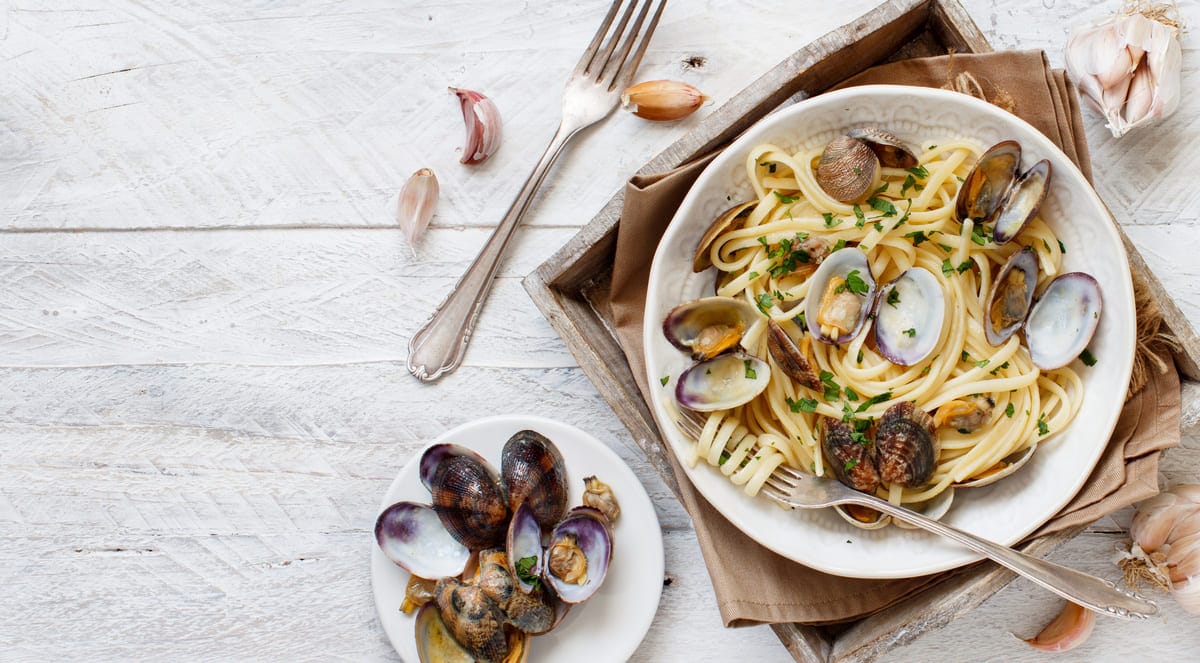
Popular Recipes
Some popular recipes include steamed or fried clams, clam chowder, clam hodgepodge, pasta dishes with clams, clam cakes, and clam rolls.
More regional favourites include fried Ipswich clams from New England and Spaghetti alle Vongole (also called Spaghetti Vongole) from Italy.
Clams are also used in various stir-fry and noodle dishes in Asian cuisine.
Conclusion
Overall, clams provide numerous functions for both the environment and humans. With their wide availability, versatility in the kitchen, and unique cultural and religious importance, clams are an important and nutritious part of many cuisines worldwide.
Understanding clams’ life cycle helps ensure that their populations are healthy and thriving and continue to benefit their ecosystems and provide their essential services.

